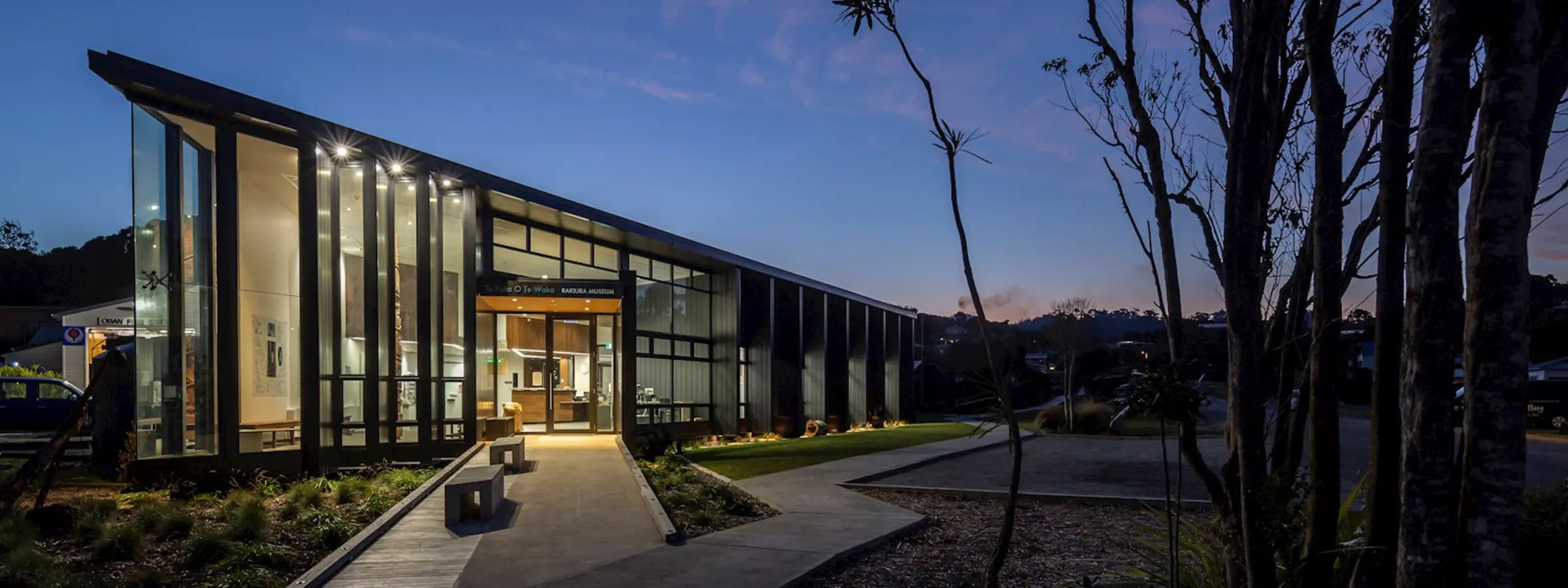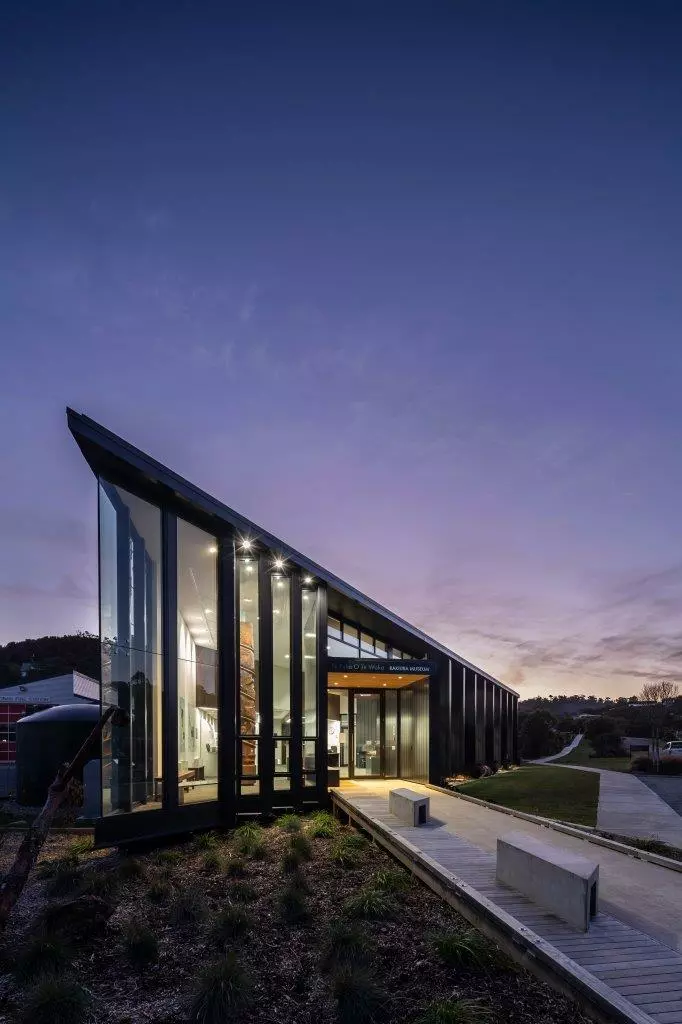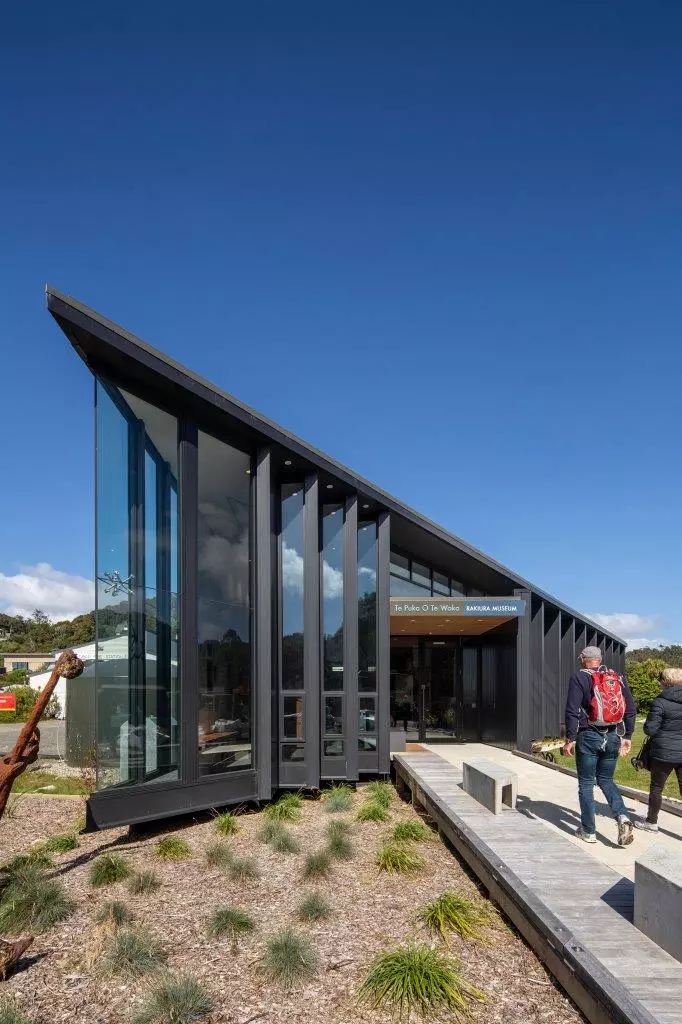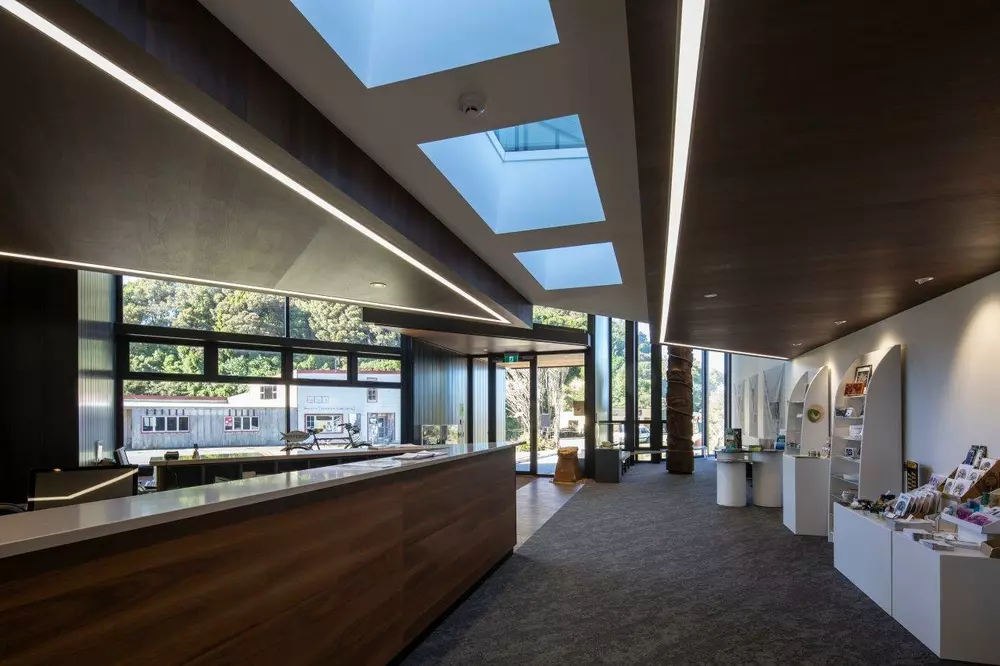News
Worthy of hosting Rakiura's treasures
Kim Newth - Wateford Press November 2021
Photos by Graham Warman Photography
Rakiura Stewart Island’s rich history can be readily explored by visitors and locals alike at the island’s new purpose-built heritage centre - Te Puka O Te Waka, Rakiura Museum.
This beautiful new facility owes much to the efforts of local volunteers over many years who worked tirelessly to make this project a reality. As far back as the late 1990s, it had already become obvious that the converted house then being used as a museum was no longer up to the job of storing and displaying Rakiura’s precious treasures.
Gradually, through fundraising and grant applications, a point was reached when plans for a replacement could finally be considered with WSP Architecture winning the tender for the museum’s new design.
“This project would not have happened without the Rakiura Heritage Trust, in particular their chair Margaret Hopkins,” says Julian O’Sullivan, WSP Architecture Studio Director, Southern.
“Effectively, they started from nothing; the work they put in to organise and fundraise for this over some 15 years or more is the real story of this project.”
As the first piece of civic infrastructure constructed on the island in over 25 years, this project is very much in line with WSP Architecture’s tradition of designing spaces that are meaningful to people and place.
“From the outset, I was hugely aware of the significance, importance and beauty that is Rakiura Stewart Island,” says Julian, who along with being the project’s design consultant is also a recreational hunter who has visited the island many times.
“The place and its people make this an incredibly unique project and a project of real soul and integrity. It has been a once in a lifetime project for me because of that community and the dedication of those trust members who saw it through to fruition.”
The museum’s outstanding design has been recognised by Te Kāhui Whaihanga New Zealand Institute of Architects with a 2021 Southern Architecture Award. The judges praised it as ‘a fruitful collaboration resulting in a building that captures the bicultural history and aspirations of the Stewart Island community.’
The prominent wedge-shaped site – reminiscent of a boat’s prow - inspired the project’s rich narrative that is connected with the ocean, maritime history, local iwi, community and environment. The building itself is like a boat with a floating prow housing taonga, with ‘ribs’ down the side of the museum referencing whales’ ribs and local whaling history.
Rakiura Stewart Island has a prominent place in Māori mythology as ‘the Anchor Stone of Māui’s Canoe’.
The museum’s Māori name – Te Puka O Te Waka – honours this special significance and was gifted by Kāi Tahu. Outside are two anchors representing Māori and European maritime history.
Visitors arriving on Rakiura Stewart Island will have no difficulty finding the new museum, next to the DOC visitor centre. The front public foyer is a transparently open space that naturally leads visitors through to the exhibitions area. In the foyer, a carved pou is an impressive sight, referencing both Māori history and the island’s early European history. Thousands of items are in safe storage at the museum, beautifully conserved and able to be accessed by researchers and families









